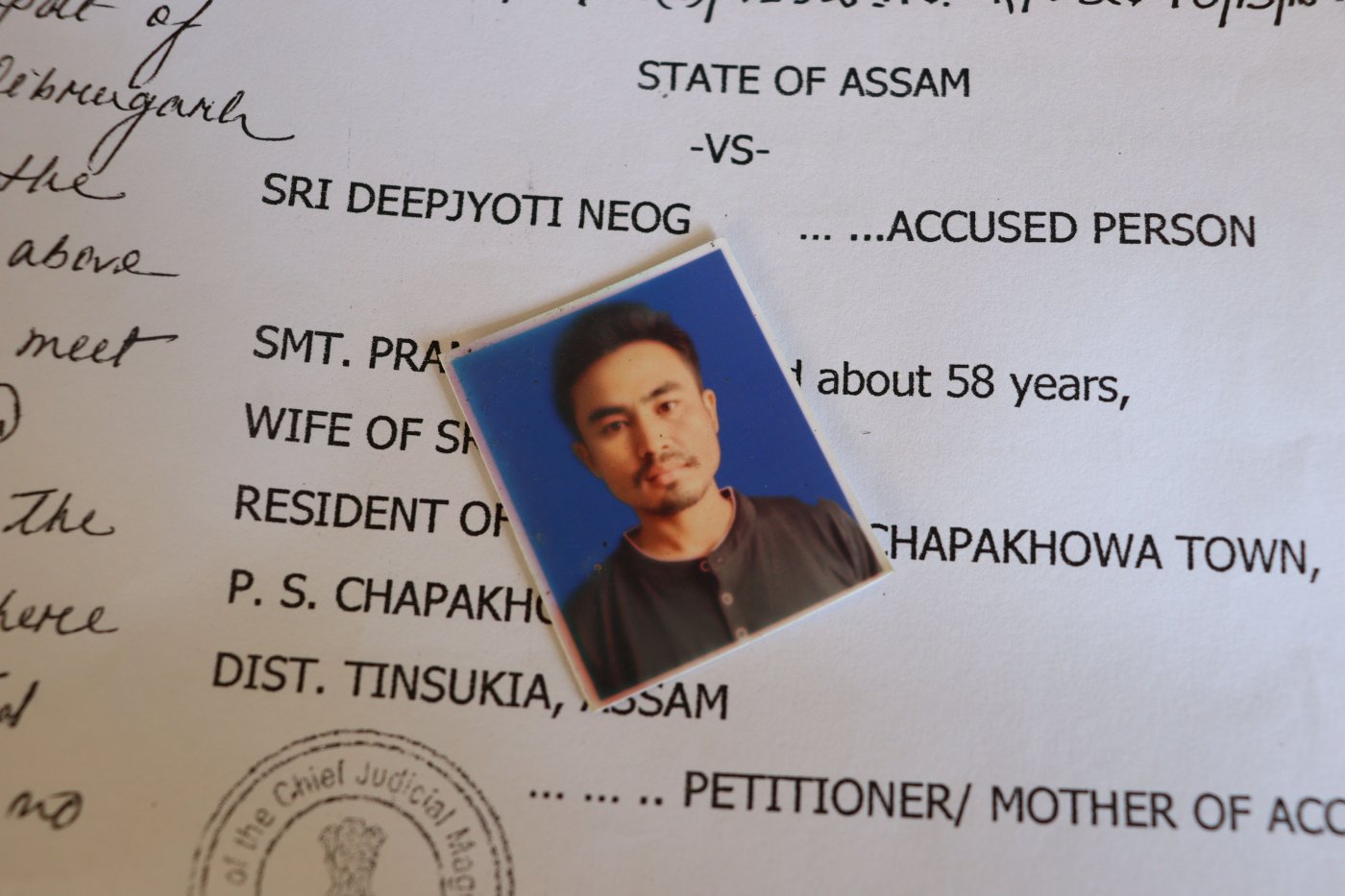Tinsukia & Jorhat, Assam: A chilly breeze blew through the rutted lane when Deepjyoti Neog, 26, left his house on the morning of 23 December 2023 without informing his mother, Pramila Neog.
She didn’t think much of it until later, for he occasionally spent nights with friends.
A little later that day, roughly 2 km away, Munmani Borgohain repeatedly called her husband, Biswanath Borgohain, 34, on his mobile phone. He had stormed out after a heated exchange between the two.
The Neogs and the Borgohains live in Chapakhowa, a town in the Sadiya subdivision of north-eastern Assam’s Tinsukia district, which sits on the foothills of the Himalayas, more than 470 km east of Guwahati.
Biswanath Borgohain finally answered his panic-stricken wife’s calls around 7.30 pm. He was in Roing, he told her with some irritation. Roing is a town in neighbouring Arunachal Pradesh, a 30-minute drive north of Chapakhowa, and he was celebrating ahead of the new year.
“He was drunk, miffed at me for calling him frequently, and said he wouldn't return home ever,” said Munmani Borgohain, in her early 30s. “He switched off his phone.”
Around the same time, a cloud of anxiety descended in Manoj Buragohain’s house, in the Nijarapara neighbourhood of Chapakhowa. Manoj Buragohain, a bus driver plying on the road between Assam and Arunachal, always returned home on time, but that evening phone calls to his number went unanswered, said Priyanka Buragohain, his wife.
A television news bulletin the following morning said Deepjyoti Neog, Biswanath Borgohain and Manoj Buragohain, all three former Assam State Transport Corporation (ASTC) employees, were injured in police firing. The three had been on their way to Myanmar to join the proscribed United Liberation Front Of Assam-Independent (ULFA-I), according to the report.
The ULFA-I is an armed separatist group that broke away in 2011 from the United Liberation Front of Asom (ULFA).
Superintendent of police (SP) of Sadiya, Mrinal Deka, told reporters that while being brought back to Sadiya, the trio had tried to “snatch a firearm” from a policeman and flee in the dark.
“Our personnel had to resort to controlled firing to ensure they couldn’t flee,” Deka was quoted as saying.
The three men’s families strongly refuted the allegation that they were about to join the ULFA-I, and said police had injured them in fake encounters.
The case reignited a continuing row in Assam that is set against a backdrop of sharply rising police encounter incidents since May 2021, when Himanta Biswa Sarma of the Bharatiya Janata Party (BJP) assumed office as chief minister.
Assam registered 50 encounter deaths between 1 January 2017 and 31 January 2022, according to data released in 2022 by the union ministry of home affairs. Of the 50 deaths, 18 occurred in 2021-2022 alone, after Sarma assumed office. The 18 deaths in 2021-2022 marked a 350% increase over the four deaths in police encounters registered in Assam in 2020.
Sarma also holds the home portfolio in the Assam cabinet, and the state government’s own numbers paint a grim picture.
According to an affidavit filed by the state government in the Gauhati high court in September 2022, between May 2021 and August 2022, the state recorded 171 police encounters, in which 56 persons were killed and 145 injured. The list also included four ‘custodial deaths’, incidents in which the accused were reported to have died during transit, including one in which a vehicle trailing a police van ran over an accused who tried to flee.
This is a 1300% increase compared to deaths reported in 2020, when Sarma’s predecessor Sarbananda Sonowal was chief minister.
Data compiled by this reporter showed that between 10 May 2021 and 31 January 2024, the state witnessed at least 210 police ‘encounters’, in which about 180 persons were injured, including Deepjyoti Neog, Biswanath Borgohain and Manoj Buragohain, and more than 80 were killed, a 20-fold hike in deaths in comparison to four reported in 2020.
The three Chapakhowa men, who were travelling together that evening in Biswanath Borgohain’s car, were booked under sections 120 (B) (punishment for criminal conspiracy), 121 (waging or abetting war against the government of India) and 121 (A) (conspiracy to commit offences punishable under section 121) and 123 (concealing with intent to facilitate design to wage war) of the Indian Penal Code, 1860, and sections of the Unlawful Activities (Prevention) Act, 1967.
Deepjyoti Neog was granted bail on 18 March, while Biswanath Borgohain and Manoj Buragohain remain in the district jail.
Article 14 made repeated attempts to seek comment from Assam director general of police G P Singh on the three men injured in a police encounter in the wee hours of 24 December, and on the overall rise in police encounters in the state, but calls and texts went unanswered.
We also called and texted his staff for an interview, but did not receive a response.
The director general of police, however, told India Today NE that evidence regarding the three men’s connection with the ULFA-I would be given to the courts. He was quoted as saying that the Sadiya superintendent of police had recounted the men’s alleged attempt to flee, prompting the police to use force to stop them.
‘Forced To Mention Militant Group In Police Complaint’
When Biswanath Borgohain switched his phone off saying he would never return home, the thought that he may have crossed the border did cross his family’s minds.
For Assamese families in upper Assam, including Tinsukia and other districts along the eastern flank of the Brahmaputra, anxieties over male family members joining insurgent group are always palpable, for these districts are fertile grounds for insurgent activities and for recruiting by the ULFA-I. In October 2023, the union government extended the enforcement of the Armed Forces (Special Powers) Act (AFSPA), 1958 in Tinsukia and three other districts, while withdrawing it from elsewhere.
Worried that Biswanath Borgohain may have gone down the same route, his family contacted the Sadiya police requesting them to trace his location. Around 10:30 pm, hours after Munmani Borgohain and her family members returned from the Sadiya police station, she received a call from the police station.
The police, according to the family, said his location was in Arunachal Pradesh’s Kharsang, a town on the fringes of an Indo-Myanmar international border and about 90 km south-east of Chapakhowa. The officer-in-charge of the Sadiya police station asked them to file a missing person complaint to aid the investigation, according to the family.
It was nearly midnight when Munmani Borgohain and other family members reached the police station again. The subsequent events took them by surprise, they said.
“When we filed the missing complaint, the police rejected it,” said Rohita Borgohain, Biswanath Borgohain’s elder sister.
The family told Article 14 that police inspector Siim Timung and other personnel said their complaint would be lodged only if they mentioned in it that Biswanath Borgohain was on his way to join the ULFA-I.
At first, the family refused to do so. However, with their complaint being rejected, they gave in. “We had no other option,” Munmani Borgohain said. “We thought the police would let them go if we just said they were going to join ULFA-I.”
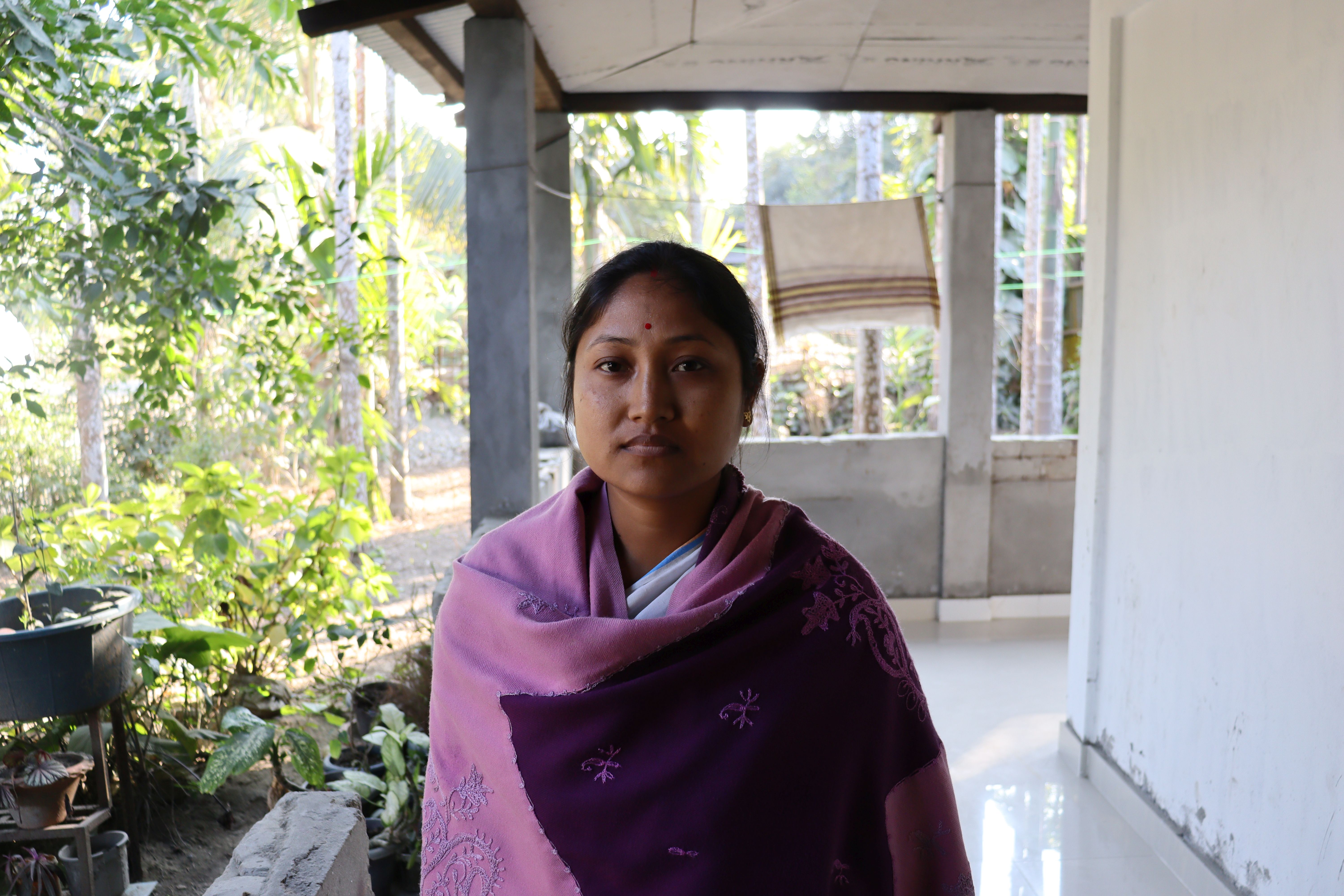
Based on this complaint, superintendent of police Deka told journalists the following day that families had given information “in writing” that the three men had “run off” to join the proscribed outfit, and had been injured in an encounter in the Hahkhati reserve forest in Tinsukia, about 30 km from Chapakhowa, while being brought back.
The Neogs, Borgohains and Buragohains all admitted to Article 14 that they had indeed mentioned the ULFA-I in their complaint but said they had done so under duress.
“We were forced to mention ULFA-I in the complaint,” Munmani Borgohain, a mother of two, said. “Otherwise, they would not have lodged it at all.”
Pallabi Buragohain, Manoj Buragohain’s sister, echoed the Borgohains’ assertion. “We did not know that agreeing to this would mean they would use it against us to give us further a bad name,” she said.
Article 14 contacted Inspector Timung regarding the allegation by the families that they had been coerced to state in their complaints that the men were planning to join a militant group. He refused to comment. “I am not entitled to brief you on this,” Timung said.
After repeated attempts, Deka acknowledged Article 14’s queries but did not comment on the allegations. “I am on leave, attending to my mother in hospital,” he said over the phone.
Pramila Neog said her son would never join a militant group. “He has no history of crime,” she said. “He is a good boy looking for employment opportunities.” She said the police’s claims were fake.
Pallabi Buragohain said nobody in the vicinity of their home would believe her brother had any links with separatists. “Manoj would just drive a bus and come back,” she said.
Meanwhile, the ULFA-I refuted the police’s contention on the three men’s connection with them.
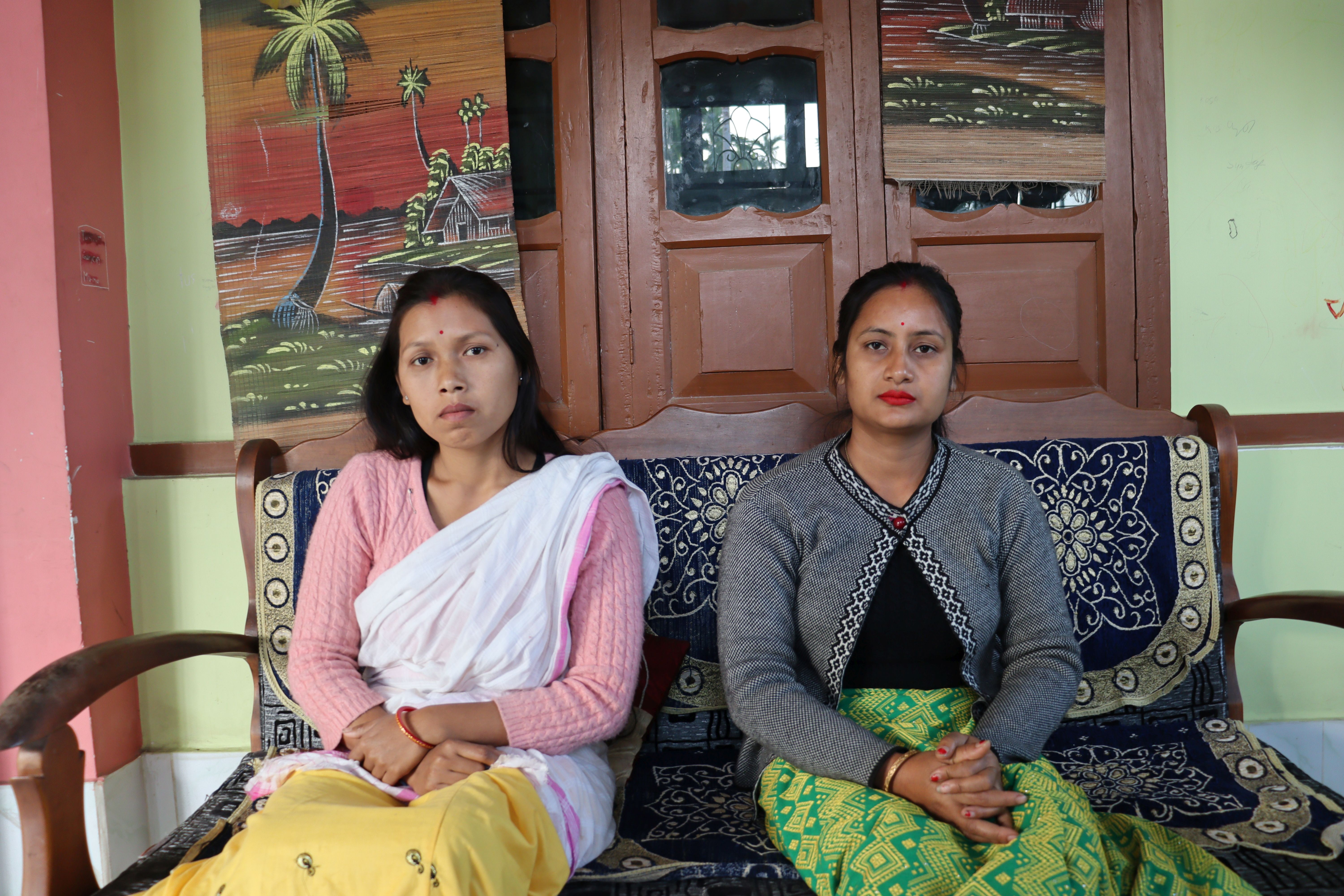
Interrogated For Days, Man Takes His Own Life
In the wee hours of 26 December 2023, soon after the Titabor police dropped off Dipankar Gogoi at his home in Garikuri Birina Sayek, a remote village in eastern Assam’s Jorhat district, the 24-year-old hugged his ailing mother and wept inconsolably.
“Moi nirdukh (I am innocent),” he said, sobbing. “I cannot take this torture any more.”
For four days, Gogoi had been made to report to the Titabor police station to be interrogated in connection with a grenade blast on 14 December near a military station in Jorhat.
On the morning of 26 December, Gogoi’s body was found hanging from a tree in a tea garden in the backyard of his unplastered house built through a government scheme.
Rimly Saikia, Gogoi’s elder sister, said he had returned from each day of interrogation with a tube of ointment that he’d hide from them.
“He was physically and mentally tortured in custody to the extent that he thought killing himself was a better choice,” Rimly Saikia, 28, told Article 14. She said he had recounted the torture to their mother, Dipti Gogoi, on the night before he took his life.
“Even the postmortem report clearly showed that he was tortured.”
The postmortem report mentioned two antemortem bluish bruise marks, one measuring 9 cm x 5 cm and the other 14 cm x 9 cm, on either side of his buttocks.
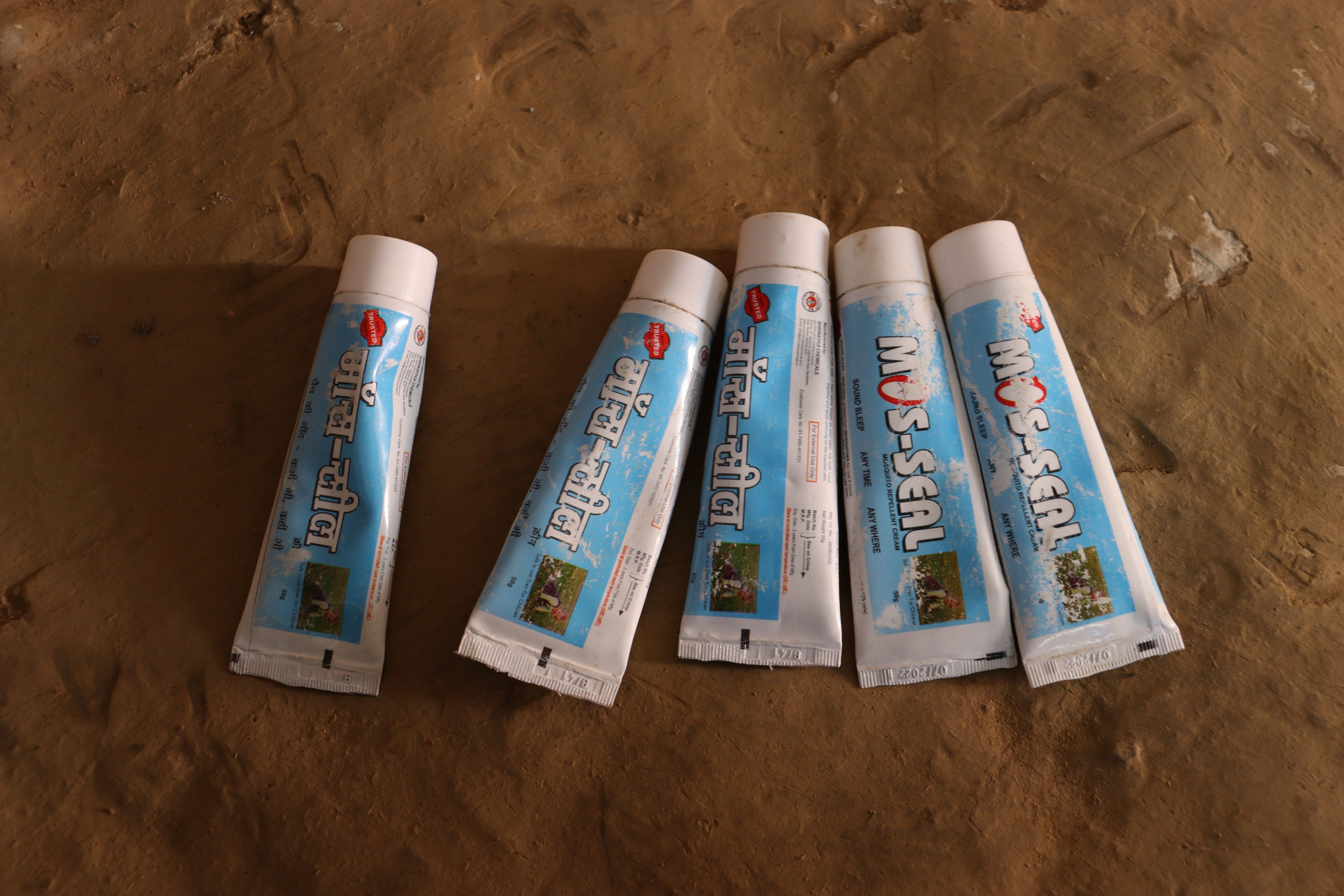
Jorhat superintendent of police Mohan Lal Meena had been trying to coerce her brother to confess to the grenade blast, she alleged.
Dipankar Gogoi was a former ULFA-I cadre, Meena told journalists, adding that he had been arrested once earlier in 2019, by the Assam Rifles, in Arunachal Pradesh.
The Jorhat grenade blast was the third and most recent blast by ULFA-I in a span of 23 days, and Gogoi had therefore been brought to the Titabor police station for questioning, according to the SP.
The earlier grenade blasts took place in the eastern Sivasagar district on 9 December and in Tinsukia on 22 November, both near military camps, with no casualties in either. Pallav Jyoti Gogoi, one of the accused in the Sivasagar blast, had been arrested along with Dipankar Gogoi in Arunachal in 2019.
“He [SP Meena] held him at gunpoint,” Rimly Saikia said, recounting what her brother told their mother. She said police told him of the encounters the previous day in Sadiya. “They told him he would suffer a similar fate.”
The family said Dipankar Gogoi had gone to join the ULFA-I in 2019 but had been detained by Assam Rifles. “He never joined the ULFA-I,” Rimly Saikia said. Since his return in 2020, he had been appearing for competitive exams to join the Assam Rifles or Assam police, she said, showing examination forms her brother had filled.
“On the day of the blast, Dipankar was home, looking after our mother,” Rimly Saikia said.
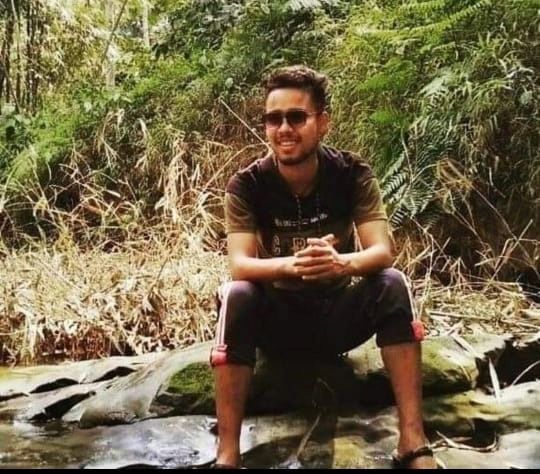
Superintendent of police Meena told local reporters at a press conference that Dipankar Gogoi was dealing in arms and that “incriminating evidence” had been recovered from his phone. Though he was “not physically involved in the grenade blast”, the SP said, police suspected him of involvement in planning or arranging the crime.
“These are lies, hurtful lies,” said Rimly Saikia. “These lies are tainting Dipankar when he is ash now.” She said there was no proof that her brother had been involved in any criminal activity.
On 30 January, Article 14 contacted SP Meena for comments. Initially willing to take queries, he later disconnected the call and asked this reporter to email the queries instead.
We sent a questionnaire to Meena by email but did not receive a response.
Meanwhile, DGP Singh initiated an inquiry into Dipankar Gogoi’s suicide, to be conducted by a team under the inspector general of police (IGP) of the Eastern Range.
Rimly Saikia said the police’s view of the case as one of suicide was unfair. “It was not a suicide. It was an organised murder,” she said. “The police have blood on their hands.”
Chief minister Himanta Biswa Sarma, too, ordered an additional chief secretary-level inquiry into the death. The inquiry will be concluded within 30 days, Sarma tweeted a day later on 27 December.
Bidyut Saikia, general secretary of Krishak Mukti Sangram Samiti (KMSS), a peasants' rights organisation, said he believed Dipankar Gogoi was selectively targeted despite having made amends for his antecedents. “There are journalists, political leaders and many others who are former ULFA cadre,” Bidyut Saikia said. “Why was Dipankar singled out even though he was not involved in the blast?”
Meanwhile, on 16 March, over two months after Dipankar Gogoi’s suicide, the state government gave his family a cheque of Rs 3 lakh. The family accepted the compensation, but said it was not justice.
“The government paid us blood money while Dipankar’s killers are free,” Rimly Saikia said.
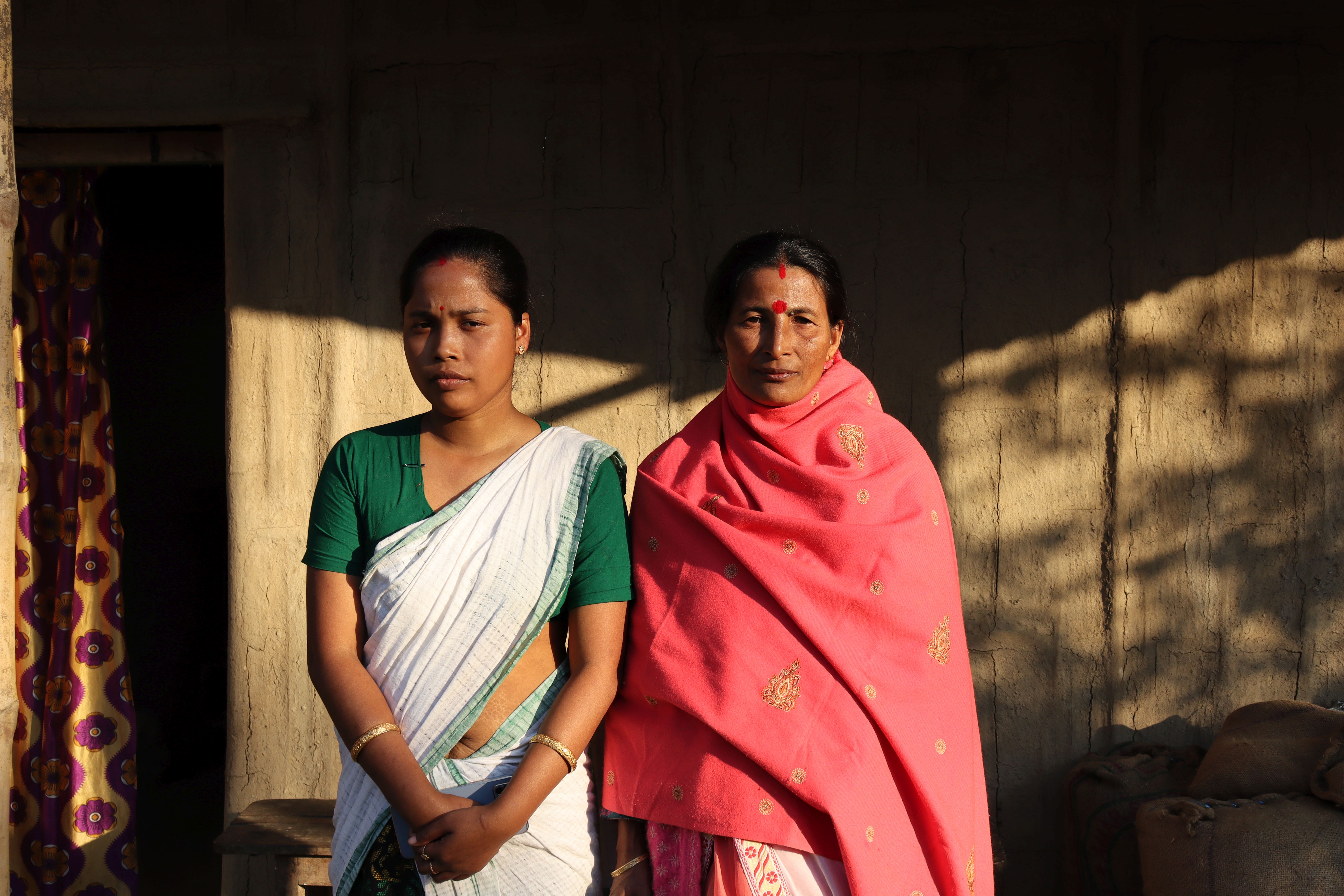
Caught In The Police Vs Militants Crosshairs
The December 2023 encounter in Chapakhowa, and the suicide of Dipankar Gogoi came on the heels of three grenade explosions (here, here and here) in the state, ahead of a tripartite peace treaty between the union government, the state government and the pro-talks faction of ULFA.
The ULFA-I, which is not part of the negotiations, claimed responsibility for the explosions.
Rumel Asom, a member of ULFA-I’s publicity cell, claimed the explosions were in response to the state police chief Singh’s “arrogance” in terming the outfit’s armed struggle as a law and order situation instead of depicting it as a political issue.
This sparked a heated exchange between Singh and ULFA-I in the media, the former challenging the separatist group to target him, and the insurgents asking him to move around Guwahati without security for a week.
Families of the men accused of being ULFA-I members told Article 14 this acerbic exchange led to arrests of innocent people. Deepjyoti Neog, Biswanath Borgohain and Manoj Buragohain were caught in the crosshairs of the verbal sparring between the police chief and the militants, they said.
“Our people bled in their fight for egos,” said Pallabi Saikia, adding that she held the Assam police and ULFA-I equally responsible.
Khagen Gogoi, Dipankar’s father, echoed her sentiments. “The police went on a wild goose chase, and targeted innocent people like Dipankar,” he said. “We will never trust the police again.”
Bidyut Saikia of the peasants’ group KMSS also believed that the police firing incidents and Dipankar Gogoi’s suicide could be traced back to the verbal feud between Singh and ULFA-I.
Article 14 emailed a questionnaire to Sadiya SP Deka and Jorhat SP Meena for their comments on the allegations, but did not receive a response.
The Assam police also arrested 12 alleged ULFA-I linkmen (those who serve as links between new recruits and the ULFA-I) from Sivasagar, Jorhat and Tinsukia in connection with the three blasts.
Criticism Gathers Over Alleged Fake Encounters
On the day that Deepjyoti Neog, Biswanath Burgohain and Manoj Buragohain were shot at in a police encounter, over 200 km away from them, in Sivasagar district’s Konwarpur village, Pallav Jyoti Gogoi was injured in a similar police encounter. The Sivasagar police had arrested Pallav Jyoti Gogoi a day earlier for his alleged role in the 9 December grenade blast near an army camp in the district.
On 25 December, the Kamrup police fired at Pranjal Das, a suspected ULFA-I insurgent, injuring him in Baihata Chariali, a town located 20 km north of Guwahati.
Besides the families of the men accused of being insurgents, the ULFA-I also issued statements (here and here) calling the encounters staged extrajudicial violence by the State.
The incidents also drew strong reactions from the BJP’s opponents in the state.
“Police firing at detainees is an act against human rights,” Congress legislator and leader of the opposition in the state assembly Debabrata Saikia told reporters in December.
Peasant leader Akhil Gogoi, a strong critic of the BJP, said the facts of the encounters were doubtful. He said Pallav Jyoti Gogoi from Sivasagar is a manual labourer, while the family of Pranjal Das who was shot at in Baihata Chariali had alleged he was shot inside a police station.
Akhil Gogoi likened the recent encounters to the ‘secret killings’ of the 1990s.
“We used to see these sorts of fake encounters in the Nineties when the government was running operations against the ULFA,” he said.
The secret killings, called ‘gupto hatya’ in Assamese, were discreet killing sprees of suspected ULFA sympathisers, ULFA militants and their family members, conducted from 1998 to 2001, alleged to have been orchestrated by the then Asom Gana Parishad (AGP) government under former chief minister Prafulla Kumar Mahanta with the help of surrendered ULFA cadres. Between 400 and 1,100 people were suspected to have been killed over four years. The killers were never identified, and the high court gave Mahanta a clean chit in the matter.
Director general of police Singh, who was then the SP of Guwahati city, was questioned about his alleged involvement in the killings by the K N Saikia commission of inquiry constituted by the Congress government in 2005.
A retired senior police officer from Assam police told Article 14 on condition of anonymity that the recent incidents were simply killings and shootings. “There is nothing secretive about them like the secret killings,” he said. “They are just bumping people off.”
Assam has a history of fake surrenders and fake encounters, said Rajeev Bhattacharyya, a veteran journalist from Assam and author of ULFA: The Mirage of Dawn. “The police, however, cannot be the judge, jury and executioner,” he said.
A Surge In Extrajudicial Killings Under BJP
The sharp rise in extra-judicial killings and incidents of police shooting at accused under chief minister Himanta Biswa Sarma has involved cattle smugglers, rape accused and drug peddlers ( see here, here and here), with many victims belonging to religious or ethnic minorities.
Less than two months after he took charge, Sarma said in response to a question about rising incidents of policemen firing on alleged criminals that “this should be a pattern” if accused try to flee. By August 2021, the number of people injured in such police firing incidents stood at 31, including 11 deaths.
By August 2022, the state had recorded 171 cases of police firing at accused, according to an affidavit filed by the state government, with 145 injured and 56 deaths.
The affidavit was in response to a public interest litigation filed by Delhi-based lawyer Arif Jwadder in the Gauhati high court in December 2021 seeking an investigation into the encounters.
“There are about over 200 such incidents now, with 180 people injured and over 80 deaths,” Jwadder told Article 14.
The number is close to the 180 cases including 80 deaths cited by Congress leader Debabrata Saikia who moved the National Human Rights Commission (NHRC) on the matter.
Our findings based on news reports, FIR copies submitted by the government in the Gauhati high court in September 2022, and FIR copies given by parliamentary affairs minister Pijush Hazarika in 2024 showed that the state recorded at least 210 police firing incidents between 10 May 2021 and 31 January 2024 with over 180 were injured and 83 dead.
In some cases, official enquiries revealed that the shootings were not warranted.
In February 2022, a government inquiry into the case of student leader Kriti Kamal Bora being shot at by the Nagaon police in an alleged anti-narcotics raid revealed that the police, Bora, and witnesses had contrasting accounts. The report held that if Bora’s account was true, it was a case of “police high-handedness”.
The then SP of Nagaon was transferred in connection with the case. The criminal investigation department (CID) charge-sheeted a sub-inspector for attempted murder.
In another case, in August 2021, the Darrang police killed an alleged criminal named Asha Babu in the state’s northern region. The Assam Human Rights Commission (AHRC) concluded in 2023 that two police officers involved in the encounter were guilty of killing Babu in a fake encounter and directed the state government to pay Rs 7 lakh as compensation to Babu’s wife.
A CID probe into the killing of a 40-year-old tribal man named Dimbeswar Musahary in an encounter by the Rowta police in northern Assam’s tribal belt in February 2023 found it was a case of mistaken identity, with the police having misidentified Dimbeswar Musahary as “dreaded criminal” Kenaram Basumutary.
In February 2022, Union minister of state for home affairs Nityananda Rai told Parliament that between 1 January 2017 and 31 January 2022, over 650 cases of encounter-related killings took place in India. Assam ranked third on the list tabled by Rai. (Congress-ruled Chattisgarh ranked first with 191 killings, Uttar Pradesh second with 177 killings.)
Assam also recorded 41 cases of custodial deaths between April 2020 and March 2022, Rai informed parliament in July 2022 while responding to questions on custodial deaths and fake encounters by Malappuram Member of Parliament M P Abdussamad Samadani. The figure for custodial deaths in Assam is the highest among the northeastern states.
Subrat Talukdar, a human rights activist in the state, said the Assam government appeared to be creating a police state. “They want to create fear in people's minds so that no one protests,” Subrat Talukdar said.
‘Court Was Misled On PUCL Guidelines’
On 27 January 2023, the Gauhati high court disposed of Jwadder's PIL seeking that cases of "fake encounters" be investigated, The court held that the state said it was probing the cases.
The bench of Justice Suman Shyam and Justice Susmita Phukan Khaund also said in the order that the government had filed FIRs in all encounter cases from May 2021 to August 2022, in line with the ‘PUCL guidelines’.
The Supreme Court in 2014 in People's Union for Civil Liberties (PUCL) vs State of Maharashtra & Ors, a matter against extrajudicial killings, laid down 16 guidelines to be effective in all cases of police encounters.
Jwadder told the court that the government had not investigated the encounters as per the court-enforced PUCL guidelines.
One of these guidelines, according to Jwadder, is to file an FIR under section 302 (murder) of the IPC leading to an independent investigation to find out the cause and circumstances of the police firing.
Jwadder told Article 14 that all 41 FIRs he received from the prosecuting inspectors were cases filed against the accused.
On the court’s instruction, prosecuting Inspectors of all districts were to share with Jwadder copies of FIRs in the 171 police encounter cases between 10 May 2021 and 31 August 2022, but he had only received 41 such FIRs. “The rest was never provided to me despite applying for them on many occasions, and despite orders to the prosecuting Inspectors by the previous benches to provide me with the FIR copies,” he claimed.
Article 14 has seen the FIR copies and can corroborate his claims.
FIRs that the government produced before the Gauhati high court in September 2022, and those placed before the state assembly on many occasions since 2021, both in response to questions on whether FIRs had been filed to investigate cases of police shootings, were all cases filed against the accused.
In February 2024 too, Parliamentary affairs minister Pijush Hazarika said FIRs were filed in all such cases, responding to a question by Akhil Gogoi.
Akhil Gogoi’s question was in the context of what steps the state government had taken to investigate such cases of police encounters.
The court was misled, Jwadder said. “There was no investigation into who fired the shots. and how the encounters took place.”
The lawyer believed the police’s claims of having investigated the encounter cases were in “flagrant violation of the PUCL guidelines”, he said.
Another guideline set by the PUCL case was that investigation into deaths or grievous injuries caused by encounter shootings must be carried out by the CID or a team led by a police officer of another police station, and of one rank above the men involved in the encounter.
In the case of Assam’s police shootings, FIR copies showed otherwise.
“There were cases when a police team from the same police station and police officers of the same rank investigated the cases,” Jwadder said. “So how were they independent investigations?”
In the June 2021 case of an alleged cattle smuggler who was shot at, a sub-Inspector registered the FIR against the injured alleged cattle trafficker, under sections 325 (voluntarily causing hurt), 307 (punishment for attempt to murder), 353 (assault or use of criminal force to deter a public servant from discharging their duty) and 324 (voluntarily causing hurt by dangerous weapons or means) of the IPC. The officer appointed to investigate the case was another sub-inspector, of the same police station.
In another FIR from February 2022, following a police firing incident in Tinsukia, a sub-inspector filed an FIR against an alleged unnamed drug peddler injured in police firing after “he tried to flee from police custody”. The investigating officer in the case was from the same police station.
A similar pattern is evident in over 100 cases where the officer appointed to investigate the case was either from the same station or of the same rank as the police officer involved in a police shooting.
“These are clear violations of the PUCL guidelines,” said Jwadder. “The court was misled on PUCL guidelines.”
In May 2023, Jwadder moved the Supreme Court against the Gauhati high court’s dismissal of his PIL.
In the recent hearing in the apex court on 23 February 2024, the government of Assam failed to file an affidavit for a third consecutive time in response to Jwadder’s allegations since the court first began to hear the matter.
Magisterial Probe Into Only A Few Encounters
The PUCL case guidelines mandated a magisterial enquiry into police encounters that resulted in death.
Parliamentary affairs minister Hazarika has said that of the 131 injured and 34 deaths between 10 May 2021, and 31 January 2024, magisterial enquiries were ordered in 97 cases.
According to Jwadder, 16 detailed magisterial enquiry reports that the government produced before the High Court in February 2022 after much stonewalling raised “pressing questions” about the way the policemen involved were given clean chits.
There were instances where the doctor's and police’s versions didn’t match, forensic analysis was not done in many cases, and in some cases, magistrates even said documents were not provided for the enquiry.
In one magisterial enquiry into the killing of six alleged cadres of the insurgent group Dimasa National Liberation Army (DNLA), the report found there were no fingerprints on the arms recovered, and forensic as well as ballistic reports were yet to be received.
In the magisterial enquiry into a 2021 firing incident involving alleged dacoit Shohidul Islam, the latter told the magistrate that the Dhubri police fired at him “intentionally, without any need”.
The report said police claims that Islam was shot while escaping police custody could not be established.
“Still, the magistrate gave a clean chit to the police ruling out any foul play,” said Jwadder, who said these enquiries were conducted in a lackadaisical approach.
The AHRC in July 2021 took suo moto cognisance of police encounters following media reports. The state government submitted these 16 enquiry reports to the rights body on 30 October 2021. However, no action was taken by the AHRC.
Majority Of Victims Are From Minority Groups
In December 2021, of 31 deaths in police shootouts and in police custody since Sarma became CM, 14 were Muslims and 10 belonged to tribal communities. The number of victims from ethnic and religious minorities has increased since.
A compilation of data sourced from the government affidavit in the Gauhati high court, data furnished before the state assembly in February 2024, and news reports between May 2021 and January 2024 showed the same trend.
The same time frame, of the 83 killed and injured in police shootings, we found that over 45 are Bengali Muslims, with a sizable number of victims also belonging to tribal communities and the rest from caste Assamese communities.
The majority of those injured in such firing incidents are also from religious and ethnic minority groups.
The state machinery’s response towards those injured or dead in “encounters” is relatively skewed against the Muslims in comparison to cases when the victims belonged to the caste Assamese community and other communities, a political science professor from Pramathesh Barua College in western Assam’s Dhubri told Article 14.
Studies of policing across India (here and here) in 2018 and 2019 by advocacy group Common Cause showed endorsement for extrajudicial killings from police officials, who also showed anti-Muslim prejudice.
Bidyut Saikia of KMSS said that the state feels no pressure to act when the victims belong to religious minorities. He pointed out that when All Assam Students’ Union (AASU) leader Kriti Kamal Bora, a caste Assamese, was shot at and injured in January 2022 by Nagaon police in an ant-narcotics raid, outrage from civil society groups, student unions and politicians culminated in Sarma ordering an inquiry.
Sarma has, however, denied that any specific community was targeted by police.
On the selective outrage and police action on encounter killings, Sushanta Talukdar, who edits the Guwahati-based Nezine magazine, said some victims belonged to certain organisations and communities that wield influence.
“If the victims are not associated with any pressure groups, then the government does not act,” he said.
The political science professor from Pramathesh Barua College who spoke anonymously said in the case of encounter victims who belonged to the Bengal-origin Muslim community—pejoratively called Miyas in the state—the state enjoyed impunity and felt no pressure to act. “The faultlines between communities have always existed in Assam, but this government has widened the binary between who is Assamese and who isn’t,” the professor said.
“The blood of the Muslims is of lesser value to the state,” said Rejaul Karim Sarkar, president of the All Assam Minority Students’ Union.
Asked if the Assam police targeted a particular community, Jury Brodoloi, the BJP’s spokesperson, said people from other communities were also killed and injured in police encounters in Assam.
(Arshad Ahmed is a journalist based in Assam, writing on human rights, politics and marginalised communities.)
Get exclusive access to new databases, expert analyses, weekly newsletters, book excerpts and new ideas on democracy, law and society in India. Subscribe to Article 14.

